 W
WAgia Lavra is a monastery near Kalavryta, Achaea, Greece. It was built in 961 AD, on Chelmos Mountain, at an altitude of 961 meters, and can be described as the symbolic birthplace of modern Greece. It stands as one of the oldest monasteries in the Peloponnese.
 W
WThe History and Folklore Museum of Arnaia is located in the town of Arnaia in Chalkidiki, Central Macedonia, Greece, 58 km from Thessaloniki and 37 km from Polygyros.
 W
WThe Historical Museum of Crete was founded by the Society of Cretan Historical Studies in 1953 and is housed in a neoclassical building of significant architectural merit in the city of Heraklion on Crete, an island of Greece. The museum was expanded following the addition of a new wing and floor.
 W
WThe Jewish Museum of Thessaloniki is a museum in Thessaloniki, Central Macedonia, Greece presenting the history of Sephardic Jews and Jewish life in Thessaloniki.
 W
WThe Museum of the Macedonian Struggle in Kastoria, Greece is housed in a traditional old mansion that belonged to the teacher and fighter Anastasios Pehion (1836–1913). It was inaugurated on 23 May 2010, a project of the "Friends of the Museum of the Macedonian Struggle in Kastoria" that was founded in 1993 in the Municipality of Kastoria.
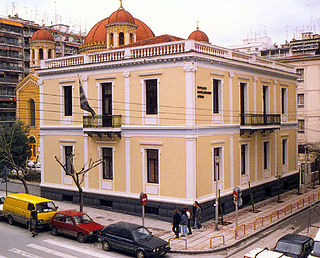 W
WThe Museum for the Macedonian Struggle is located in the centre of the city Thessaloniki in Central Macedonia, Greece. It occupies a neo-classical building designed by the renowned architect Ernst Ziller and built in 1893. In its six ground-floor rooms the museum graphically illustrates the modern and contemporary history of Greek Macedonia. It presents the social, economic, political and military developments that shaped the presence of Hellenism in the region. This approach enables the visitor to form a global picture, not only of the revolutionary movements in the area, but also of the rapidly changing society of the southern Balkans and its agonizing struggles to balance between tradition and modernization.
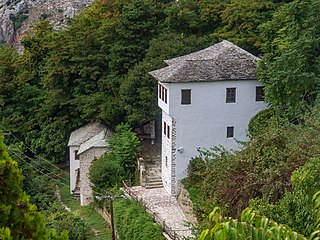 W
WThe Museum of Folk Art and History of Pelion is a museum in the village of Makrinitsa (Volos), Magnesia, Greece. It is housed in the Topali Mansion, an 1844 building designated a "Work of Art and Historical Preserved Monument". The museum holds a large collection of folk art and everyday objects of the Pelion area from the 18th and 19th centuries;
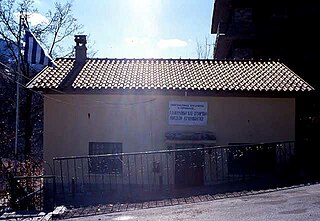 W
WDrosopigi is on Mount Vitsi, 14 kilometres from Florina, Western Macedonia, Greece. In the 1990s members of Drosopigi Cultural Society ‘I Proodos’ started collecting objects from everyday life, some which people still used and some which had fallen into disuse. The folklore collection was created in 1987 and housed in the old community hall of Drosopigi in the centre of the village.
 W
WMuseum of Gold and Silver-smithery, Folklore, and History is an ethnographic museum located in the village of Nymfaio, West Macedonia, Greece. The museum was open on 10 September 2000 and inaugurated by Konstantinos Stephanopoulos, president of Greece in that year.
 W
WThe Museum of the Macedonian Struggle near Chromio, Kozani regional unit, Greece is an open-air museum created and landscaped over an area of 7 hectares presenting the struggles of the Greeks in Macedonia until it was united to Greece in 1912–13.
 W
WThe National Historical Museum is a historical museum in Athens. Founded in 1882, is the oldest of its kind in Greece. It is located in the Old Parliament House at Stadiou Street in Athens, which housed the Hellenic Parliament from 1875 until 1932.
 W
WThe Open-air Water Museum is located in the city of Edessa, Central Macedonia, Greece. In the early 20th century there were many water-powered workshops in the city. In 1991 the Municipality of Edessa decided to improve and develop the Mills area, the Kannavourgio and the ‘Estia’ works, by establishing an open air, water-power museum, and creating recreation areas. The Open-Air Water Museum, which opened early in 2000, aims to acquaint visitors with the history of water-power from the workshops of pre-industrial times up to the early 20th century.
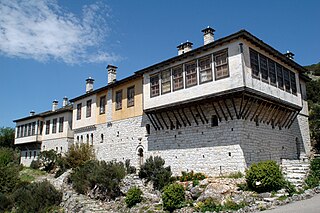 W
WThe Pavlos Vrellis Greek History Museum also known as Pavlos Vrellis Museum of Wax Effigies is a privately owned wax museum in Ioannina regional unit, Greece. It was set up by the sculptor Pavlos Vrellis in February 1983, and is the best known wax museum in Greece. The museum hosts 150 wax models in 37 themes, inspired by various events from Greek history.
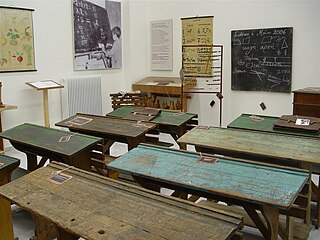 W
WThe School Life Museum is a museum in Nerokouros, Chania, Crete, Greece.
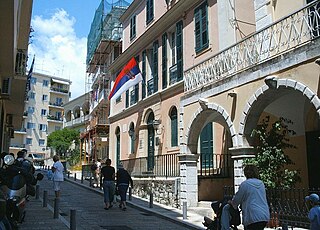 W
WThe Serbian Museum of Corfu is a museum in Corfu, Greece. It houses rare exhibits about the Serbian soldiers' tragic fate during the First World War. The remnants of the Serbian Army of about 150,000 soldiers together with their government in exile, found refuge and shelter in Corfu, following the collapse of the Serbian Front as a result of the Austro-Hungarian attack of the 6 October 1915. Exhibits include photographs from the three years stay of the Serbians in Corfu, together with other exhibits such as uniforms, arms and ammunition of the Serbian army, Serbian regimental flags, religious artifacts, surgical tools and other decorations of the Kingdom of Serbia.
 W
WThe Thessaloniki History Centre was established by the Municipal Council of Thessaloniki, the largest city in northern Greece, in 1983, and has occupied its present premises in Ippodromiou Square since 1995.
 W
WThe White Tower of Thessaloniki is a monument and museum on the waterfront of the city of Thessaloniki, capital of the region of Macedonia in northern Greece. The present tower replaced an old Byzantine fortification, known to have been mentioned around the 12th century, that the Ottoman Empire reconstructed to fortify the city's harbour sometime after Sultan Murad II captured Thessaloniki in 1430. The tower became a notorious prison and scene of mass executions during the period of Ottoman rule.